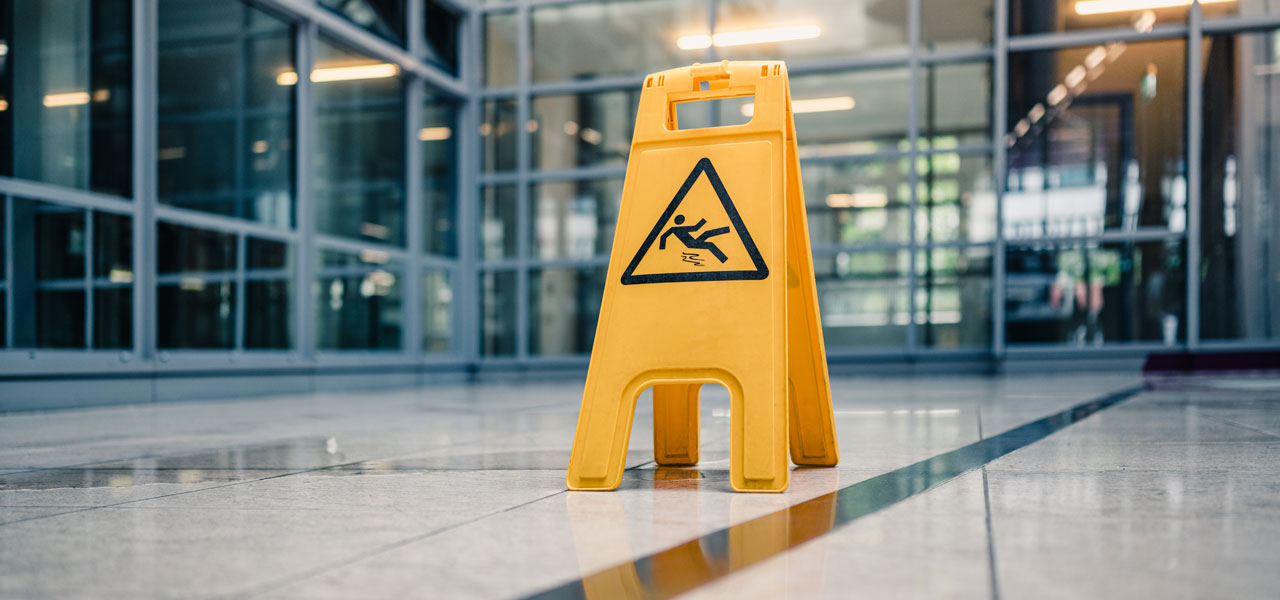The cost of replacing physical property can easily be determined through adequate valuations. However, the financial cost of a potential third party claim is something that is incredibly difficult to foresee. Society is becoming more aware of its rights in terms of claiming for injury or damage and, as such, the demands made for compensation are now higher than they have been in previous years.
Therefore, it’s very important for all business owners to consider taking out public liability insurance, and to ensure - with their intermediary’s help - that the cover is sufficient to cater for as many scenarios as is possible.
Why public liability cover - and how much cover is enough?
Even businesses with the best intentions and exceptional quality control in their manufacturing and other processes are not immune to third party approaches. Businesses rely on employees to carry out their work and no matter how thorough their processes or supervision are, accidents and mistakes can still happen.
How much liability cover is enough? One is tempted to say ‘how long is a piece of string?’ but liability cover is not a fickle issue. Firstly, a liability claim can have serious financial repercussions for a business. Secondly, it is impossible for an intermediary alone to foresee what could go ‘wrong’ in a business environment.
Only a business owner - who best knows and understands their business - can advise an intermediary of all potential exposures involved. From there, an intermediary may assist in obtaining the most suitable cover available, bearing in mind that certain trade risks simply are not insurable. An intermediary will determine the highest and widest indemnity cover a business owner can afford to eliminate the risk of a protracted claims process.
Why measuring adequate liability cover is a challenge
Damage for items that are repairable or replaceable is usually easy to calculate because these items have values and are freely available. But in the case of an injury, the challenge is in evaluating how much compensation to pay. A myriad of factors have to be taken into account here:
- The nature of the injury
- The resultant consequences of this injury
- The loss of income and earning potential
- Past and future medical expenses and
- General damages.
The reality is that no two incidents are ever exactly the same and each matter is evaluated on its own set of facts. Every business owner needs to take out insurance that covers as many possibilities as possible.
The types of public liability claims a business owner may face
Public liability is the legal liability a business owner can incur towards members of the public who either come onto their business premises or to whom they provide a service. Here are a few common incidents Santam has had to deal with in the past:
- Someone entered a business premises, slipped and fell on a wet floor, on broken tiles, or on a step that was not clearly marked.
- Someone fell when a railing gave way.
- Defective work was carried out on a claimant’s vehicle, or during the installation of a carpet, geyser, blinds, etc.
- Animals can cause injury – both minor and serious – and can also cause death by biting, kicking, goring (depending on the animal concerned). Livestock can escape their enclosure and trample or eat crops, or even end up on the road and be involved in a collision. Wherever an animal can come into contact with people, there is always the danger of an incident occurring.
- Spread of fire: Can cause damage to property, crops, veld and animals and can spread across vast spaces.
- Schools – children will always be children and curiosity or normal childhood behaviour can lead to injury or death. Some injuries can have lasting consequences for the child concerned.
- Product liability and defective workmanship – repairs to items can lead to consequential damage as a result of such work which a claimant may want compensation for.
- The manufacture of goods which are defective may also lead to consequential damage as a result. Often these consequential damages can lead to huge financial losses and even business interruption for the claimant. There are certain covers in this regard that are only obtainable via a specialised liability underwriter and it is imperative to understand the business concerned in order to provide the most suitable cover possible.
What public liability cover should include
Liability claims can put someone out of business if they are not adequately insured. Public liability and other liability cover should not only provide for settlement amounts and/or court awards, but also for the legal fees arising from the defence of any cases brought against the insured business as well as the claimant’s legal fees.
The legal costs can often form the largest portion of a liability claim – and these costs are steadily rising. There have been cases where, in order to defend the insured, the only expense incurred has been legal fees. Consumers are becoming more aware of their rights and are approaching attorneys more readily to assist them with the formulation of their claim against the insured.
If you’d like to know more about liability insurance, speak to your broker or contact us. For more advice tailored to businesses, visit our blog.
